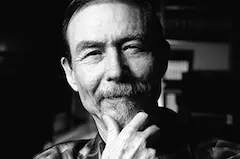Carver Mead
Gordon and Betty Moore Professor Emeritus of Engineering and Applied Science at the California Institute of Technology (Caltech). Ph.D. - Caltech
Recommended book categories
Professor Mead has recommended books in the following areas:
A pioneer of modern microelectronics, Carver Mead has made contributions to the development and design of semiconductors, digital chips, and silicon compilers, technologies which form the foundations of modern very-large-scale integration chip design. In the 1980s, he focused on electronic modeling of human neurology and biology, creating “neuromorphic electronic systems.” Mead has been involved in the founding of more than 20 companies. In 1960, he was the first person to describe and demonstrate a three-terminal solid-state device based on the operating principles of electron tunneling and hot-electron transport. In 1966, Mead designed the first gallium arsenide gate field-effect transistor using a Schottky barrier diode to isolate the gate from the channel. Mead is credited by Gordon Moore with coining the term Moore’s law. In 1968, Mead demonstrated, contrary to common assumptions, that as transistors decreased in size, they would not become more fragile or hotter or more expensive or slower. Rather, he argued that transistors would get faster, better, cooler and cheaper as they were miniaturized. Mead was the first to predict the possibility of storing millions of transistors on a chip. Mead was one of the first researchers to investigate techniques for very-large-scale integration, designing and creating high-complexity microchips. He taught the world’s first VLSI design course, at Caltech in 1970. He co-authored the landmark text “Introduction to VLSI systems”, published in 1979. This was A pioneering textbook, it has been used in VLSI integrated circuit education all over the world for decades. Mead and his Ph.D. student David L. Johannsen created the first silicon compiler, capable of taking a user’s specifications and automatically generating an integrated circuit. Next, he worked with Professor John Hopfield and Nobelist Richard Feynman, helping to create three new fields: Neural Networks, Neuromorphic Engineering, and the Physics of Computation. As the space is limited we leave interested readers to read more about this amazing scientist on his wikipedia page. Here is a list of some of his major awards:
2015, Fellow, National Academy of Inventors (NAI) for his “unparalleled commitment to excellence in academic invention."
2011, BBVA Foundation Frontiers of Knowledge Award of Information and Communication Technologies “… for his influential thinking in silicon technology. His work has enabled the development of the microchips that drive the electronic devices (laptops, tablets, smartphones, DVD players) ubiquitous in our daily lives."
2005, Progress Medal of the Royal Photographic Society
2002, National Medal of Technology
2002, Fellow of the Computer History Museum “for his contributions in pioneering the automation, methodology and teaching of integrated circuit design”.
2001, Dickson Prize in Science
1999, Lemelson-MIT Prize
1997, Allen Newell Award, Association for Computing Machinery
1996, John Von Neumann Medal, Institute of Electrical and Electronics Engineers
1996, Phil Kaufman Award for his impact on electronic design industry
1992, Award for Outstanding Research, International Neural Network Society
1985, John Price Wetherill Medal from The Franklin Institute, with Lynn Conway
1985, Harry H. Goode Memorial Award, American Federation of Information Processing Societies
1984, Harold Pender Award, with Lynn Conway
1981, Award for Achievement from Electronics Magazine, with Lynn Conway
1971, T.D. Callinan Award, In recognition of an outstanding contribution to the literature of dielectrics.”
